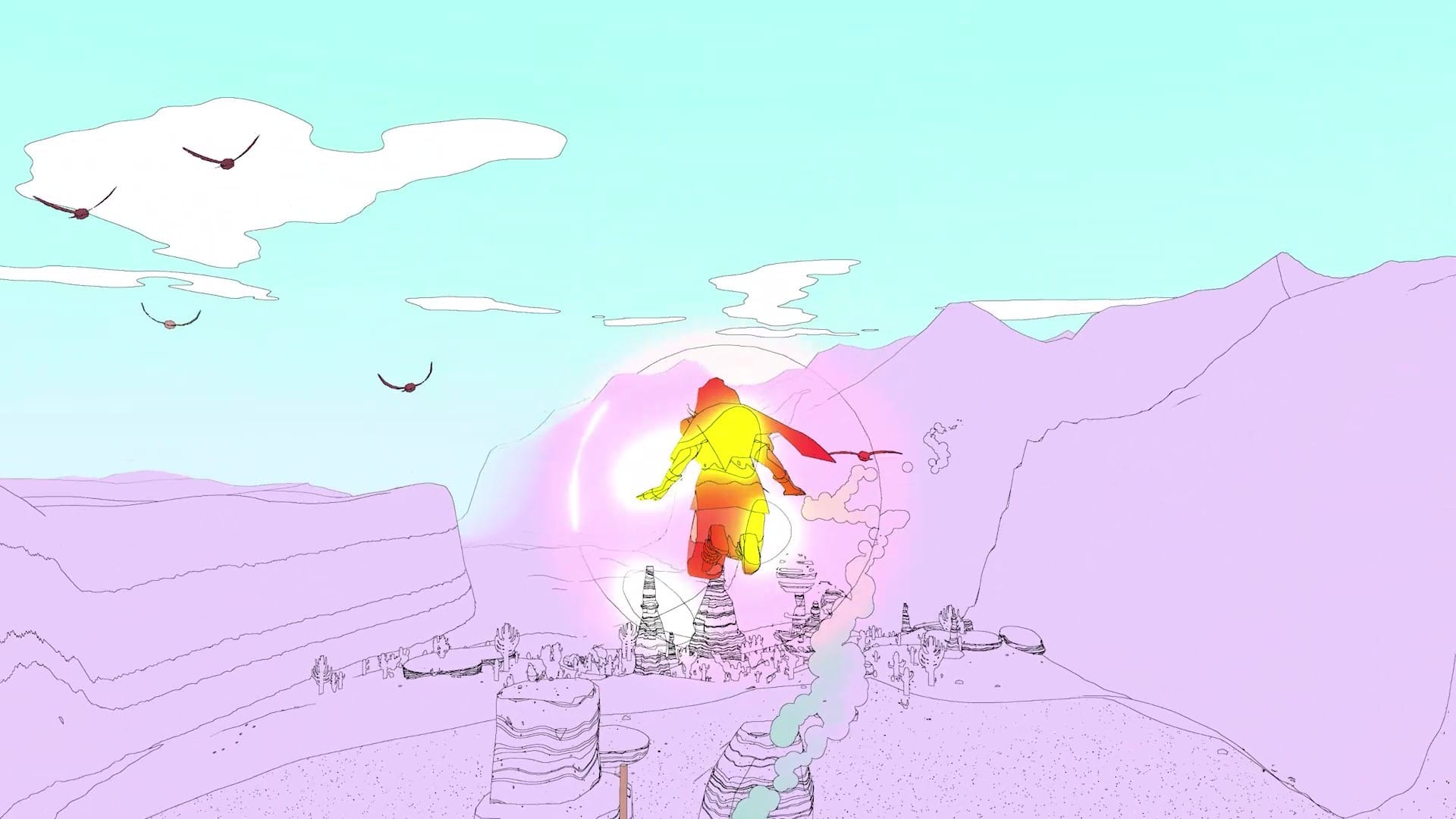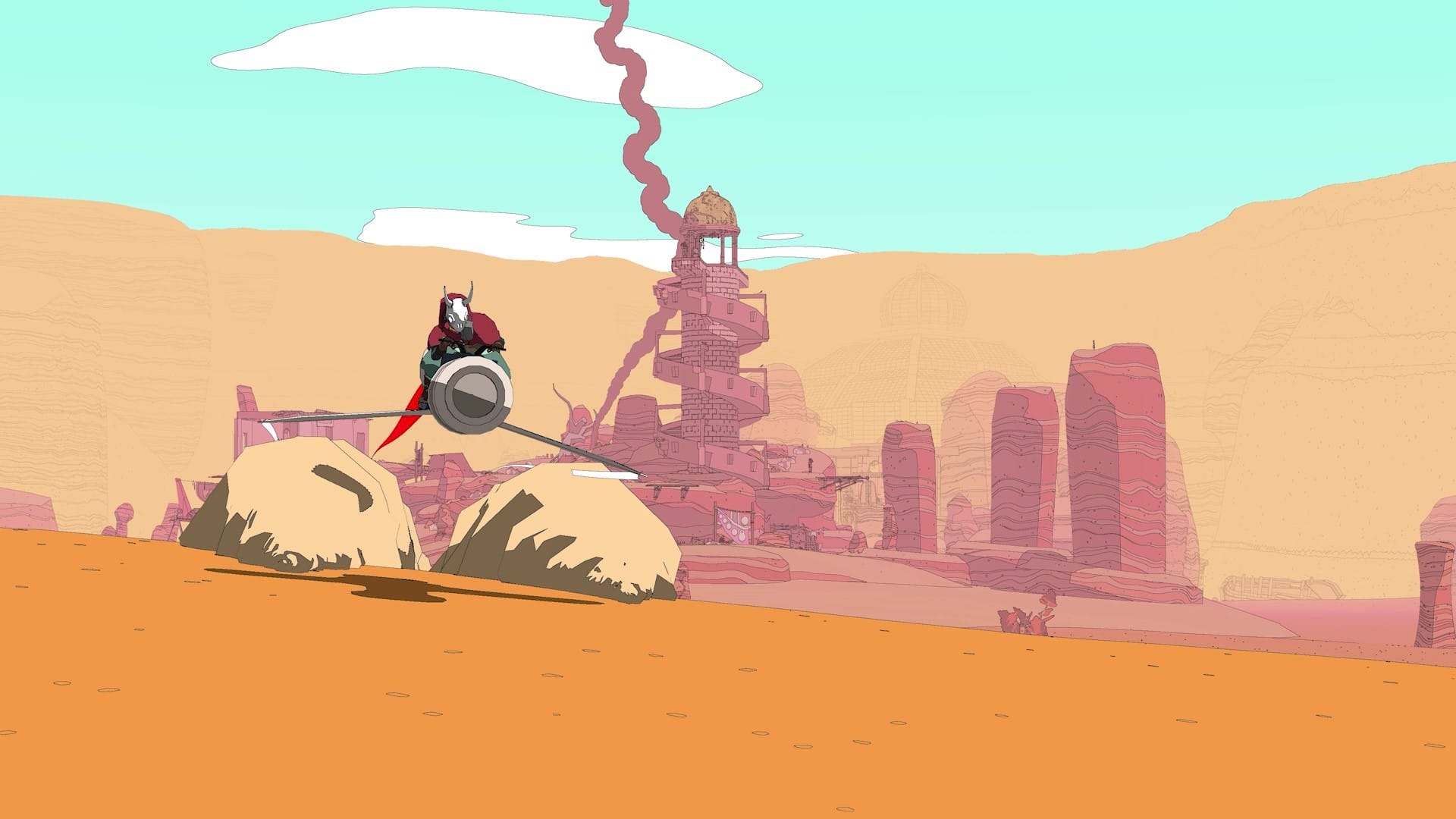The Wrong Way Up the Wyrm: What Sable Taught Me About Playing Differently
Taking a different view of the world

In the evolving landscape of interactive storytelling, Shedworks’ indie title Sable (2021) stands apart for its striking approach to narrative. Described variously as a platformer, adventure title, puzzle game, and simply a cozy game, Sable sees players shaping the protagonist’s journey through her Gliding. This coming-of-age rite determines her very future, the role she will take in her world.
The game is heavy on exploration, especially via hoverbike, and puzzles and quests are dotted throughout the fantastical landscape. There are many aspects of Sable worth praising, from its art style to the shoegaze soundtrack by Japanese Breakfast. In my time with the world, it’s the presentation of the narrative and the way Sable encourages players to form their own experience that stood out the most.
Breaking the Mold: A Different Approach to Game Design
Though there are many, many narrative games, some of the most successful narrative titles are linear, with a clearly defined beginning, middle, and end. Even open-world games, lauded for their apparent freedom of choice, routinely shepherd players through main quests and sequential storylines. Objectives are usually fixed, steering the player toward a predetermined conclusion. Sable defies these trends, marking a radical departure from gaming conventions.
At first glance, Sable appears familiar. The pre-Gliding tutorial consists of fetch quests, puzzles, and a straightforward narrative arc. But after the prologue, the game reveals its true essence; Sable’s narrative becomes nonlinear, as meandering as the hoverbike journey itself. Your only “objective” during the Gliding is to choose a mask — a symbolic decision that defines the protagonist’s career and life path in this world. There’s no set order for earning masks, no quota to meet, and no ending tied to how many you collect. Whether you choose just one, gather all fifteen, or forgo the search to chase other collectibles, the choice is yours. This openness empowers players to shape not only their journey, but also its meaning and conclusion.

My first encounter with Sable was met with equal parts curiosity and skepticism. Without a clear objective, I wondered: what was the point? That doubt quickly faded as I settled into the game’s unorthodox rhythm. Sable is less a traditional game than a meditative experience. At its heart, it’s about gliding through cel-shaded landscapes, guided only by your curiosity and a lo-fi soundtrack. While traditional gameplay elements like quests are available, they unfold at your own pace. This tranquil approach offers a refreshing departure from the objective-driven norms of most games.
Imperfections in a Unique World
Still, Sable doesn’t always execute its vision flawlessly. Technical hiccups — like lingering hoverbike trails and occasional soundtrack glitches — can momentarily break the game’s otherwise serene flow. These minor bugs were more distracting than deal-breaking. What stood out more were the limitations placed on certain in-game interactions.
Consider this scene, for example:
I had been traveling for a while when I saw it. A hulking, towering shape. The Wyrm. It loomed high into the sky, dominating the landscape. Its presence produced a thousand questions. How did it get here? What is it? Is it dangerous? I approached it cautiously. As I drove closer, I noticed spiked-shaped objects protruding from its entire body. The objective seemed clear: I must climb this creature’s husk. I jumped onto the first platform, then one to my right, then the one after that. I kept climbing, edging sideways across and up the beast. I fell several times, once losing half of my progress. But I persevered, determined to reach the top. I finally made my way to the highest point I could access. The view was like the game itself — strangely beautiful, peaceful, and isolated. The cel-shaded land spread out before me. I spent a few moments simply taking it all in. Then I looked around, wondering if I was supposed to find a reward or perhaps an NPC. Nothing.
It had taken me a while to ascend, so I decided not to descend before researching if there was something to discover. A quick Google search and — Oh. Ohhh. I had done the absolute incorrect thing. The interior of the Wyrm is a puzzle, one which grants a mask upon completion. Players are not expected to climb the exterior at all. I felt an acute sense of disappointment. Taking one last glance at the scenery, I stepped off the Wyrm and floated slowly towards the ground.

In the above example, one could argue that I was rewarded by the lovely view and didn’t need an official payoff. However, I had spent quite a lot of time climbing the Wyrm, and I was dissatisfied with the result. The Wyrm was one of several instances where Sable’s design clashed with my gamer instinct, revealing a fundamental disconnect between the way I had learned to play games and the way Sable is designed.
The Gamer Instinct and Sable’s Aberrations
Moments like my ill-fated Wyrm climb didn’t just frustrate me — they revealed how deeply my expectations had been shaped by other games. I’ve developed a “gamer instinct” based on prior knowledge of completing narrative and adventure games. Years of playing titles with tightly designed reward loops, clear markers, and immediate feedback had trained me to read environments in a specific way: large structure = boss, or puzzle = reward. So I climbed the Wyrm.
But Sable (usually) doesn’t follow that script. Its world isn’t built to funnel you toward a payoff at every turn. Sometimes, things exist just to be looked at or explored. There are many striking areas in the game that offer no puzzles, no objectives, and no tangible rewards. Sable continuously undermined my gamer instinct — yet at some points, it fell into the same trap of gaming conventions. While the outside of the Wyrm provided no reward, the inside did, and the designers had clearly been expecting players to read the Wyrm in a certain way, one that was just slightly different from my own instinct, as it so happens.
And that’s exactly why the Wyrm incident was so frustrating. It could have been a brilliant subversion of gamer instincts — where a player works for something with intrinsic value (a breathtaking view) but no in-game benefit. Instead, Sable did follow conventional logic, offering a puzzle and a reward — but only if players entered the Wyrm the “correct” way. In a game that had continually challenged me to play differently, this moment felt like a retreat into tradition.
At times, I found Sable’s inclusion of puzzles as a whole a little vexing. They felt at odds with a game so focused on freedom, exploration, and choice. Most of Sable’s puzzles had a single intended solution, which clashed with the broader invitation to play however you like. While puzzles add depth and intrigue to the gameplay loop, I wonder if Sable would have benefited from being a walking sim — or in this case, a hoverbike sim.

A Few Concluding Thoughts
While it isn’t perfect, Sable’s approach to game design and narrative is unique and deserves attention. Sable is more than a beautiful game — it’s a provocation. It asks players to unlearn the instincts shaped by decades of objective-driven design. It’s not always comfortable for the player. Sometimes, it leads you up the wrong path — literally, in my case. And sometimes, Sable itself seems to forget its own philosophy, falling back on traditional mechanics.
But despite these moments of friction, Sable is doing something bold and commendable: inviting players to value the journey over the reward, the detour over the destination.
In a gaming landscape crowded with markers, missions, and minimaps, Sable dares to say: do it your way. For me, even the wrong way up the Wyrm became part of the story — not a failure, but a moment of strange, unexpected beauty.
Sable serves as a reminder that games don’t need clear endings or constant rewards to be meaningful. Its design is not just a challenge to gamer instincts, it’s an invitation to outgrow them. With more polish and confidence, the next wave of games could go even further, crafting stories that don’t hinge on goals and worlds that reward wonder over completion.
I look forward to playing those games — and getting lost along the way.
